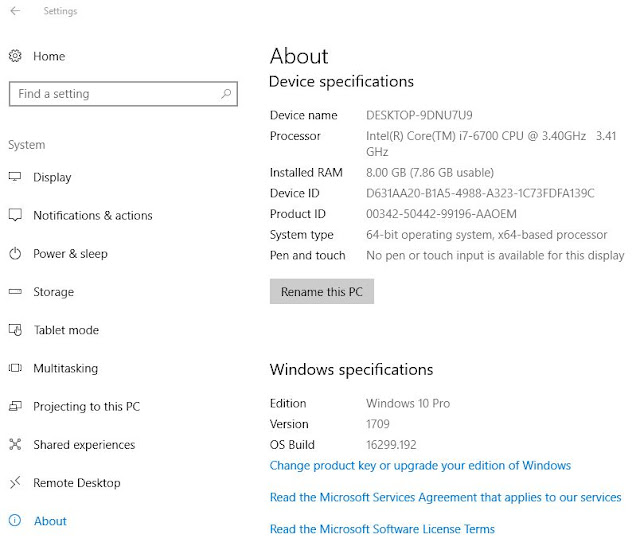How to Find Out Which Specification of Windows 10 You Have
Windows has always using build numbers, which represent significant updates to Windows. And you may not have really thought about Windows build numbers in the past unless it was part of your job to do so. But they’ve become more important with Windows 10.
This article will explain how to find out the specifications (system type, edition, version, and build) of Windows 10, you’re running. Traditionally, most people have referred to Windows based on the major, viz., version, such as Windows Vista, 7, 8, and so on. Within those versions, we also had service packs to refer to Windows 7 Service Pack 1, for example.
With Windows 10, things have been changed a bit away and Microsoft has also done away with service packs, instead of moving to release two big builds each year. If you really need to refer to a specific version of Windows, though, it’s easiest to refer to it by its build number. Microsoft has hidden the build number somewhat in an attempt to make Windows 10 look always-up-to-date, but it’s not hard to find.
In addition to builds, still, there are different editions of Windows 10 such as Home, Professional, Enterprise, and so on with different features. Microsoft is also still offering both 64-bit and 32-bit versions of Windows 10, as well.
The new Settings app also offers the specifications (of system type, edition, version, and build information) in a user-friendly form.
Hit, WindowsKey+I, to open Settings. In the Settings window, navigate to System > About.
In Device specifications, you'll see Device name, Processor, RAM, Device ID, Product ID, System type and Pen and touch.
- System Type tells you whether you’re using the 32-bit version of Windows 10 or the 64-bit version. It also tells you whether your PC is compatible with the 64-bit version or not. For example, “64-bit operating system, x64-based processor” indicates you’re using a 64-bit version of Windows 10 on a 64-bit processor. “32-bit operating system, x64-based processor” indicates you’re using a 32-bit version of Windows 10, but you could install the 64-bit version on your hardware if you preferred.
Scroll down a bit and you’ll see the Windows specifications - Edition, Version, and OS Build.

- Edition tells you which edition of Windows 10 you’re using, that is, Home, Professional, Enterprise, or Education. If you’re using Home and you’d like to upgrade to Professional, you can upgrade to the Professional edition from within Windows 10. Switching to Windows 10 Enterprise or Education editions will require a complete reinstall and a special key that isn’t made available to normal home Windows users.
- Version gives you the best information on what version of Windows 10 you’re running. It's a number that based on the date of the most recent build release and uses a YYMM format. For example, above screenshot picture shows the version, “1709” that tells us the version, we’re running is, from the 09th month (September) of 2017.
- OS Build shows the specific Operating System Build you’re running. It gives you sort of a timeline for Built Release Information for Windows 10 on Microsoft’s TechNet site between the major version number releases. In the above screenshot, the “16299.192” build was actually the Semi-Annual Channel with Version "1709", shipped in 10/17/2017 (17 Oct 2017) with latest revision 1/3/2018 (3 Jan 2018). This information is somewhat less important to most people than the major version numbers, but it can still help you identify exactly what you’re running.
You may also use the old standby Windows Version tool, WINVER, which is to find some of this information.
Hit the Start button, type “winver,” and then press Enter.
You could also press WindowsKey + R, type “winver” into the Run dialog, and press Enter.
The “About Windows” box will give you a quicker way to check your version and build but does not show whether you’re using a 64-bit or 32-bit version of Windows 10.
All this information: "system type, edition, version and, build number" can be important for determining whether Windows 10 has received a specific update, whether you have access to a feature available only in certain editions, or whether you should download the 64- or 32-bit version of a program.
And, if you’re more interested in keeping up with it, we even have a way to display your build number right on your desktop. Enjoy, this will be our next article!


















